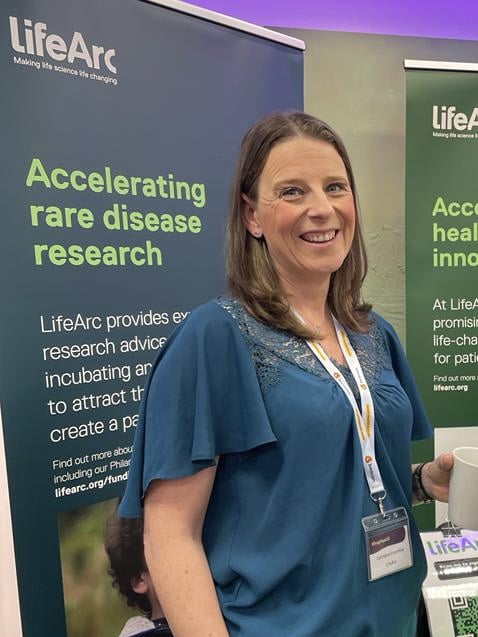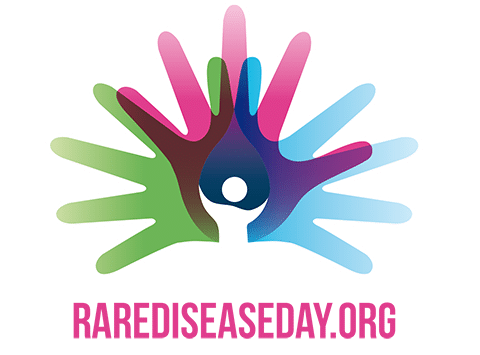This article was originally published in Rare Revolution Magazine.

LifeArc, a self-financing medical research organisation and charity, has announced the launch of its Rare Disease Translational Challenge—a significant investment of more than £100 million into rare disease research by 2030. Here, Catriona Crombie, associate director of technology transfer and Rare Disease Challenge lead at LifeArc, discusses the difference the organisation hopes to make and why they’re well placed to help overcome some of the obstacles that are preventing discoveries making it out of the lab and into benefits for people living with rare diseases By Catriona Crombie.
Who are LifeArc and what do you do?
Our focus at LifeArc is on translational science. Translational science is the part of the research journey that takes scientific discoveries and transforms them into things like tests and treatments that can actually benefit patients. Our aim is to invest, collaborate and carry out our own science to speed up this process, bringing scientific breakthroughs to those who need them, faster.
We have a really strong history in this area, and a lot of experience of bringing people with different expertise together, including medical research charities, research organisations, industry and academic scientists. Over the last 25 years, this has helped us contribute to five treatments that are now used in the clinic. Eight more are in clinical trials and many more are in different stages of discovery and development. Thanks to these discoveries, we now have money that we can reinvest in research.
When we were developing our strategy, we wanted to find the areas of real unmet medical and patient need, where our expertise could make a significant difference. Rare diseases were an obvious choice.
“Translational science is essential in improving the lives of people with rare diseases—helping to identify new treatments, improve diagnosis and management, and accelerate the pace with which these reach patients. This is what LifeArc is committed to doing.”
What have LifeArc done in rare disease research so far?
To date, we have funded over 40 projects in more than 30 rare diseases, committing more than £30 million. We have worked with many rare disease organisations and patient groups, including co-funding research with more than 20 charity partners, including Great Ormond Street Children’s Hospital (GOSH), Action Medical Research, Muscular Dystrophy UK and DEBRA Austria.
Gene therapy also holds promise for rare diseases, and we’ve contributed £8 million to the Innovation Hubs for Gene Therapies (co-funded with the Medical Research Council, Biotechnology and Biomedical Sciences Research Council), with an associated Gene Therapy Innovation Fund of up to £5 million per year.
These are just some of the things we’ve been doing, but now, we’re excited to share that our commitment to rare diseases is not only continuing, but growing. We wanted to find new ways to support the community, and help strengthen and grow the rare disease research system in the UK to improve the lives and experiences of people living with rare diseases, faster. That’s the aim of our new Rare Disease Translational Challenge.
What is the Rare Disease Translational Challenge and what difference will it make?
On 6 July, we launched our Rare Disease Translational Challenge–a significant investment of more than £100 million by 2030. By working with others, we hope we can increase the speed of diagnoses, drive the innovation of new and repurposed treatments, and improve the equality of access to both. The Challenge will also help address some of the challenges facing the research community—to help accelerate progress. This will include investments in rare disease infrastructure in the UK. We hope that, together, this will result in giving patients a better experience of diagnosis and healthcare, a better quality of life and ultimately a better chance of survival.
We also want our approach to rare diseases to be patient-centric. We will continue to listen to the needs of patients and families and understand the challenges they face. We will then invest where our combination of skills and investment can best unlock the potential of translational rare disease research.
What next?
The Rare Disease Translational Challenge includes investing £40 million towards the creation of four or five new Translational Rare Disease Centres, which will become focal points for rare disease research translation, knowledge-sharing and engagement with the patient community across the UK. The process to select these has now begun and we hope to announce the successful centres early in 2024.
We are also holding a joint £2.5 million call for projects with DEBRA Austria. This call is looking to find existing, well evidenced treatments, that can be repurposed for helping treat epidermolysis bullosa (EB)—a rare disease which causes fragile skin, resulting in tears, blisters, severe pain and wounds that struggle to heal. The call opens on 10 July, and we hope to announce successful projects early in 2024. Our hope is that these repurposed treatments may also go on to help other rare skin conditions.
These two calls, alongside all our other ongoing work, are just the beginning. We are going to continue to shape our strategy over the coming months. We will be taking a holistic view, scanning, listening and scoping to see where our expertise can add most value.
We need everyone—patients, charities, funders, researchers, industry and policy makers to continue to work with us and be involved in helping shape this strategy and our ongoing ambitious programme. By working together, we will ensure we maximise LifeArc’s investment and expertise, so that we can help get new innovations to people living with rare diseases, faster.
We look forward to sharing more with you over the coming months.
Find out more about LifeArc’s current work and the Rare Disease Translational Challenge.
Media contact
Hannah Severyn
Head of Media and PR at LifeArc
hannah.severyn[at]lifearc.org



